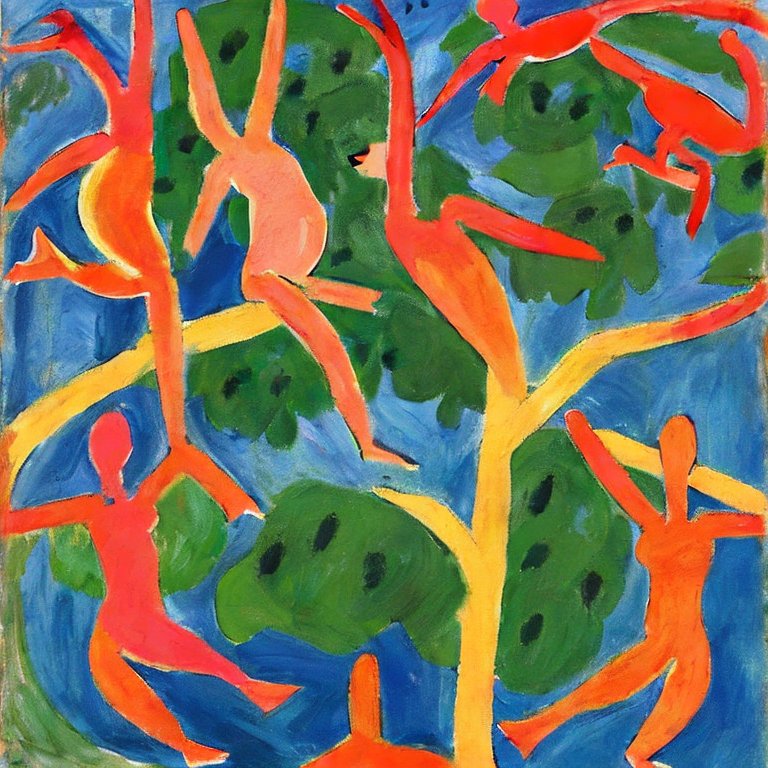I recently unearthed a tragic flaw in my personal healing plan: I had set up two goals without noticing that they were mutually exclusive. This resulted in an internal fistfight that was painful and confusing until I course-corrected.
We all unintentionally wind up in this type of internal struggle from time to time. During the pandemic, newly mobile workers moved across the country while desperately craving a sense of stability and safety. Entrepreneurs often try to grow their businesses while simultaneously attempting to create more free time. Notice how do-able these goals are when taken sequentially. But, when attempted together, the result is, at best, a stalemate and, at worst, a battle for primacy. And when these conflicts come up in the healing process, we can lose our roadmap to well-being entirely.
Today, we’re tripping together. Come with me into the world of psychedelics. We’ll talk about conflicting goals in the context of healing – specifically, when to head into the light and when to brave the darkness.
First, a brief tutorial on the use of psychedelics in healing.
Psychedelic Assisted Therapy
You’ve no doubt heard the buzz about the use of psychedelics and ketamine to treat a variety of psychological conditions, most notably depression and post-traumatic stress disorder (PTSD). The press initially smacked of snake oil: “miracle cure” news bites flooded the web. More recently, the backlash began. Folks have taken to the media to counter that initial positivity with exposés of their negative experiences.
For me, the jury is out as both a clinician and a patient. The research on psychedelics is of exceptionally high quality and demonstrates startling results: rapid improvements in previously stubborn cases of what’s known as “treatment-resistant depression” and PTSD. The ketamine research is less robust, though the results are promising. But these same studies restrict the types of patients who can participate and are conducted in highly refined settings with little comparison to real life. So, I’d say the field is a bit out over its skis on this.
In psychedelic-assisted therapy, the drug isn’t simply ingested. It’s taken in a safe, controlled environment, in the presence of a trained therapist, who works with whatever material arises. Psychedelics are mind-altering substances that relax mental boundaries, so treatment in this state can be deeply effective and meaningful. It’s also been shown that psychedelics (at least used in this manner) promote neuronal growth. That’s what we want to see: new neural networks forming that are healthy and promote positive change.
There’s no consensus on whether ketamine is, technically, a psychedelic (it’s classified as a “dissociative anesthetic”), but it absolutely behaves like one at a moderate dose and in the therapeutic context. It’s known to produce the previously described relaxing of boundaries along with other psychedelic effects, such as visual and auditory hallucinations and visuals like complex geometric patterns, colors, and shapes.
Ketamine’s results are much more variable from session to session than other psychedelics but it has a distinct advantage: It’s legal when administered by a licensed professional everywhere in the US. Though prohibitively expensive for many people, this legal status is making it the drug of choice for people like me, who are trying to stabilize the rollercoaster of depression and are hoping to resolve traumas from the past.
One more thing to know about these substances: the journey takes us where it takes us. If the brain wants to take us into our deep, dark past, it will – regardless of our preference – and, as long as you’re with a skilled guide, that’s good, healthy, and appropriate. You get to wade through the crap with a partner and work it through. It can also take you to a beautiful, peaceful place and, sometimes, a euphoric or spiritual place, and that heals by building up a repertoire of positive experiences. Again, you wanting that kind of trip does not make it so. We work with what’s offered, viewing this as the medicine’s (or the brain’s) wisdom.
But we do have some influence. It’s traditional to set an intention prior to the journey. That intention and the mindset we bring into the room can influence the outcome. If we come searching for the darkness, that’s what we’re most likely to find. Ditto for the light. Both types of journeys contribute to healing.
I’ve been on this road with ketamine for a year now and I’ve experienced every conceivable low and high.
Convening and collaborating with my Parts in a lovely, healing circle
Visiting my “black hole” – the inner depths where my traumatic experiences are stored
Partaking in a spiritual ceremony in which my “divine spark” was restored
It’s been a glorious and bumpy ride.
And now onto my recent travails…
Two Mutually Exclusive Goals
Ahhh… goals. They’re often critical to success. You know the old saw: You can’t get where you’re headed if you don’t set a course. But goals can also lead us astray if they’re poorly constructed or whimsically considered. Which mine were.
Goal #1 was stability, safety, and serenity. I kicked off 2023 with two travel-free months and I wanted to invest that time in what I call “crash prevention” – focusing on self-care and utilizing ketamine treatment to avoid that experience known well by people with recurring depression: falling off an emotional cliff.
Goal #2 was…ummm…different. I wanted to use this precious “free” time to stare into the spiky maw of the trauma beast – to be the trouper I am and fully face my past using ketamine treatment to facilitate access. The goal was to speed up the trauma work because…well, it’s not fun, it’s not done, and I’m ready, instead, for some time in the sun. 🌞
(BTW…Who was I kidding? I’ve added teaching Qi Gong to my already packed schedule. I don’t have “free” time!)
I’ll bet many of you have spotted the problem that I somehow missed: there’s no way to do depth trauma work and remain stable – far from the edge of an emotional cliff. In fact, stirring up the most painful experiences of one’s life is almost a prescription for a depressive crash.
Woops.
Revelation #1
Blindspots suck and we’ve all got them. If a student suggested this treatment plan to me, I’d definitely have noted the flaw. But I missed it completely because wanting – called craving in the meditation world – is like a blinding light reflected off a mirror. Vision impaired. And I definitely wanted to resolve both the depression and the trauma…like, yesterday.
Revelation #2
In the language of Internal Family Systems, my critic Part – known by the clever name The Critic – is never happy with the choices I make. I mean, it’s her job to poke holes in things, right?
So, when I’m immersed in beautiful, spiritual, or light and airy psychedelic journeys, she’s keen to point out that I’m not “doing the work” – that I’m not facing the trauma which is the entire raison d’etre for taking psychedelics in the first place (in my case – you do you and feel free to just have fun tripping!).
When I’m facing the darkness in my psychedelic journeys – purposely setting up a plan and intention to bring myself to the darkest shadows of my soul – The Critic is equally furious. “Are you crazy?” she rants. “Why would you stir up all that darkness? Don’t you know by now that the way to heal is to build layer upon layer of positive, happy, beautiful experiences?” She looks at me like I’m the worst kind of moron and stomps off.
The Critic leaves me feeling that nothing I choose is right. I can’t win. Your critic Part probably does the same, at least at times. We all have this Part, though she’s less acerbic for some.
The Routes to Healing
There are two routes to healing – especially from big “T” trauma, but also from little “t” trauma, which we all experience, and from all sorts of day-to-day emotional pain. Both routes are valid.
Route #1: To grow and change, we do need to face the shadow self – parts of oneself that are difficult to face, including thoughts, feelings, actions, and experiences.
Route #2: To feel well and fully alive, we also need to build a repertoire of pleasant experiences to serve as a foundation. We have to know and believe that life is good and beautiful and safe and valuable to provide stability, so that we are able to face pain.
For the past two months, I’ve had ketamine journeys every other week, holding these impossible goals and getting messy results. Three of the sessions were agonizing. With intentions like “Help me heal my trauma” and “Help me face my fear,” I was deliberately heading into the black hole. Flashbacks IRL can be terrifying. Flashbacks while on drugs call for next-level bravery.
When we go to these really dark places in adulthood, with a safe, skilled guide, we’re able to navigate them in a new way. My neural pathways are quite literally rewiring themselves as I relive these experiences with someone who cares for me and is able and willing to help me and be with me (and protect me, if necessary). Trauma is isolating. When we do this work, it brings us into connection, which is healing in and of itself. My fear-reducing mantra: “I’m not alone. I’m not alone. I’m not alone.” So, the experience evolves.
That said, I did kinda feel like this work was destroying me. I was moving beyond my “window of tolerance” – that area of neurological functioning that allows one to stay present through good and bad.
The Critic’s Wisdom: Come into the Light
Luckily, I discovered my misguided plan – the mutually exclusive goals – after the third session and resolved to come into the light to finish this quadrangle of therapeutic work. Stability trumped trauma work instead of the two goals competing. My intention was, “May I be open, receive, and grow,” and I did.
When psychonauts try to describe a psychedelic experience they reliably sound unhinged or unintelligible, but I’ll give it a go.
I entered the session having identified the root of my weeks-long internal battle, so my new-found clarity of goal and intention brought with it a kind of settled, centered, calm. The Critic agreed to step back and allow things to unfold without complaint. I chose some soothing music to set the tone and coach me into a loose and growth-oriented frame of mind. In the biz we call this the “set” – the mindset of the person entering the journey. My “set” was peaceful.
As boundaries gave way and I sank into a formless space, I quite literally unstuck.
Time and again, I became inanimate objects, but those objects were inanimate no longer. I was a walking apothecary cabinet, a giant rolling ball, a spindle moving up and down. At one point I said, “I can’t tell if I am in the waves or I am the waves.” My therapist: “Maybe you’re both.”
And then there was a paradigm shift: my weeble model of resilience shattered. A weeble-man evolved before my eyes. Trying to walk, he sprouted legs from out his rounded, ballasted bottom, until he could move forward. He had become unstuck. No longer was he required to simply absorb the punches of life and return for more. In that moment, I suddenly realized that I don’t have to stay in this position of pain. I can move forward, too.
This revelation was followed by a Star Trek-style, multi-level chessboard. Examining it, I said, “we’re at the last place on the chessboard.” I’d moved. Clearly, some work had come to completion.
Finally, a stream of images that were pure light and joy paraded past:
- fish swimming in a river but also beside it, with the flexibility to move in and out
- miles and miles of dolphins, filling a river, gracefully swimming forward with ease
- many, many tunnels, only moving directionally upwards
- fields of flowers blooming
The “Welcome Lyssa to the Light” celebration was on. Full tilt.
Integration
What will all this light mean for my work? Honestly, who knows? I’m certainly not done with therapy. But there is a chance that I’m done probing the darkest places in my history and soul. Or, at the very least, I’ll be moving forward with a clear, conscious, and well-defined goal and with all the Parts on board. And, I’ll be doing it with my resilience bucket filled to the brim. Because, in truth, we can only face the darkness when we’re already filled up with light.
This is how neuroplasticity enables us to change in meaningful and lasting ways.
Trying to suppress negative experiences never works. In the long run, they come back to bite us and everyone we love. But fostering positive experiences – intentionally setting the stage for them, nourishing them, relishing them, lingering in them – that is absorbed. And the more layers of positive experiences you build, the more they fill you. New neural pathways are constructed and strengthened. Over time, there’s a safe space to abide the hard times. Psychedelic-assisted therapy accelerates and amplifies this process by allowing us to blow apart boundaries we don’t even know exist.
Today, one of my mentors told me that happiness feels like a full heart and joy feels like a leaping heart. I countered: “Peace feels like a resting heart – a heart floating, full, and in flow.” That’s where I am today, and I’ll soak that in for as long as it lasts.





0 Comments